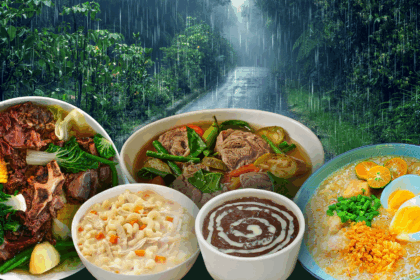Rice is a staple food in the Philippines, with nearly every dish served alongside steaming white rice. On the other hand, white rice is also a key ingredient in many Filipino kakanin and desserts.
According to a 2021 report by World Population Review, the Philippines ranks among the highest in rice consumption per capita, at 190.31 kg.
“Rice is integral to the Filipino concept of a meal. It is the basis of commensality, defining small local entities, particularly the household and its associated relations,” the Philippine Institute for Development Studies (PIDS) said.
Tradition on a Plate
Despite the availability of healthier alternatives, white rice remains the preferred and most consumed choice due to its affordability and availability. In 2022, the Philippines produced approximately 20 million metric tons of white rice, while brown rice production was significantly lower, at around 397 metric tons only.
In the Philippines, white rice remains a staple due to its affordability and ability to provide lasting satiety. According to the Department of Agriculture (DA), in 2024, brown rice was priced between PHP43 and PHP70 per kilogram in cities like Manila and Quezon, while white rice, preferred for being cheaper and more filling, is slightly more affordable at PHP40 to PHP65 per kilogram.
“Rice remains crucial for commensality in Philippine households. Among the poorest, rice will suffice to constitute a meal,” according to the study “Rice in the Filipino Diet and Culture” by Filomeno Aguilar Jr. and published by the PIDS.
Beyond its role on the dinner table, white rice is deeply ingrained in Filipino traditions, such as showering newlyweds with rice or placing rice in jars every New Year to attract prosperity.
The price of white rice’s convenience
While white rice remains a staple in every Filipino meal, its overconsumption has led to health concerns.
A study published in the British Medical Journal, led by Emily Hu, found that people who consumed the most rice, 3-4 servings per day, were 1.5 times more likely to develop diabetes than those who ate less.
Additionally, for every extra large bowl of white rice consumed daily, the risk increased by 10%. This link was especially strong in Asian countries, where people typically consume three to four servings per day, compared to just one to two servings weekly in Western countries.
Hence, it is suggested that while white rice remains an affordable and accessible food option, Filipinos should be mindful of its consumption to avoid potential health issues.
Serving half-rice law for rice overconsumption
The affordability of white rice makes it the preferred choice, often resulting in overconsumption. This contributes to the Philippines’ growing rice consumption, prompting the revival of the “half-cup rice” law, which would mandate restaurants, hotels, canteens, and eateries to serve a half-cup portion.
The DA estimates that at least PHP3.6 billion worth of rice is wasted annually.
“The secretary [Francisco Tiu Laurel Jr.] is really interested in helping revive and craft a new bill that hopefully will cater to the possibility of offering (half-cup of rice) as an option. At present, it is better if it will become an option, but of course, we defer to the legislators what could be the best scenario for this bill,” DA assistant secretary and spokesman Arnel de Mesa stated.








